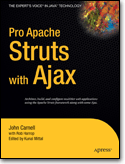作者:Patrick Galbraith
出版日期:July 7, 2009
出版社:Wrox Press
页数:888
ISBN:ISBN-10: 0470414642 ISBN-13: 978-0470414644
文件格式:PDF
The only book to address using cache to enhance and speed up Web application developmentDevelopers use Apache, MySQL, memcached, and Perl to build dynamicWeb sites that store information within the MySQL database; this is theonly book to address using these technologies together to alleviate thedatabase load in Web developmentCovers each of the four systems and shows how to install, set up,and administer them; then shows the reader how to put the partstogether to start building applicationsExplains the benefits of a base perl library for code re-use, andprovides sample applications that demonstrate in a practical way theinformation covered in the previous chaptersExamines monitoring, performance, and security, with aproblem-solving chapter that walks the reader through solvingreal-world issues
From the Back CoverAdding a cache layer to the popular LAMP stack is becoming thecommon solution to significantly reduce the load on back-end databases,and also allows for better web application performance. This newcaching component is represented by another “m” in LAMMP, which standsfor memcached—a high-performance, distributed memory object cachingsystem that provides caching for web applications. The author walks youthrough the process of using Perl to develop web applications both interms of the front-end display logic as well as the back-end dataretrieval from MySQL and memcached. You also see how to configure theApache web server to run these mod_perl applications.
You’ll discover that MySQL and memcached are where the data isstored, and Apache is the server that hosts this functionality. You’llalso examine each system while you learn how to install, set up, andadminister it.
The book shows you how to put each of these systems together so youcan start building successful applications. Helpful examples put inpractice the information covered throughout the book and aproblem-solving chapter offers real-world problems and the process ofhow you might go about finding a solution to them.
What you will learn from this book
How to install, configure, and work with MySQL particularly basicconcepts involving data, joins, and indexes as well as advanced usageof triggers, stored procedures, user-defined functions, storage engineusage, and more!
A Perl refresher on basic concepts as well as how to work with data from MySQL using various Perl data types
A chapter on object-oriented Perl
How to the use Sphinx storage engine for full-text searching as well as Gearman to distribute tasks
How to install and configure Apache 2.2 to work with mod_perl 2.0
How to use mod_perl handlers to develop web applications, including working with Ajax
A sample search engine application that puts together the various technologies discussed in the book






 评论 (0)
评论 (0) 